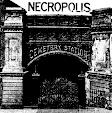ON THE TWENTY-SEVENTH NIGHT OF HALLOWEEN … I watched The Shout (1978), directed by Jerzy Skolimowski and based on a story by Robert Graves. John Hurt plays an English church organist whose real passion is acoustic science. By means of the most cutting-edge HiFi equipment the 1970's have to offer, he conducts experiments on the capture and manipulation of various micro-aural phenomena, including a wasp walking inside a bottle, water beading on a tin tray, and the smoldering of a lit cigarette. One day, a mysterious man in black appears and invites himself in. The organist and his wife are too English to resist. Soon, the man is sitting naked in their guest room and explaining how he attained supernatural powers from a shaman in the Australian outback. One of these powers is the ability to kill with a shout. The organist’s wife detests the man and wants him gone, but the organist’s curiosity overwhelms his misgivings. He makes a Faustian bargain with the man to witness the shout. After the organist stops his ears up with wax, the man lets loose a terrible wail. A hapless shepherd and his sheep one hill over fall dead, confirming that the man’s powers are real.
This highly unusual supernatural horror film is beautifully made, featuring naturalistic editing and evocative cinematography, particularly in its panoramic scenes on the coastal hills of Devon. In part, The Shout appears to be a product of Britain’s mid-century fascination with fusing mysticism and science, along with such works as Quatermass and the Pit (a 1967 Hammer film based on a 1958 BBC TV movie), The Stone Tape (1972), and various Tom Baker-era Doctor Who serials (starting in 1974). However, the collision of magic and technology is only teased in The Shout, or posed as a problem to be pondered by the viewer, since the man in black’s binding fetishes and the organist’s oscilloscopes never quite meet. Instead, Skolimowski interposes a surreal framing device in which the man in black himself, who has become a patient in a rather chaotic asylum, serves as the unreliable narrator of the film’s story. Usually such framing devices are called upon to build credibility for the supernatural events to follow. If an especially authoritative individual avows that the ensuing testimony is authentic, we can be lulled into trusting it. Here, though, the man in black's narration has the opposite effect—it disorients us. But perhaps this is exactly the state in which the manipulative wizard wants us. In any case, owing to John Hurt’s genius for creating irresistibly sympathetic characters through layered facial expressions, we soon forget the weird framing and get entirely on board with the organist’s reactions to his unwanted guest, which progress from annoyance to anger to intrigue to terror. This works so well that by the time the man in black bellows forth the lethal shout at the camera, we feel as though we are in danger of being struck down along with the sheep.


No comments:
Post a Comment